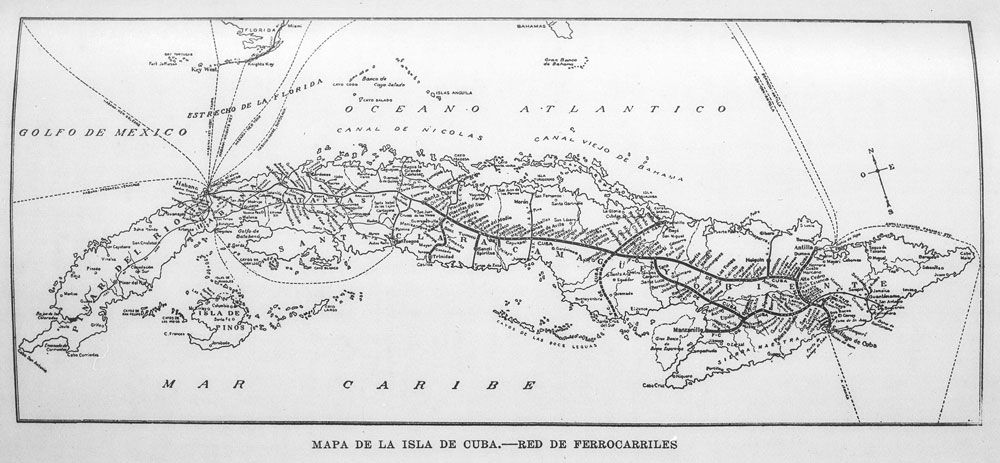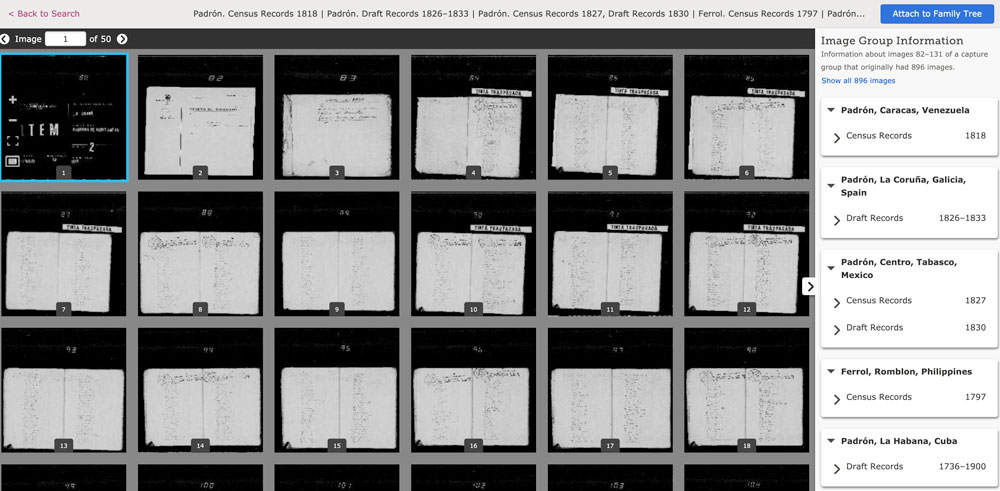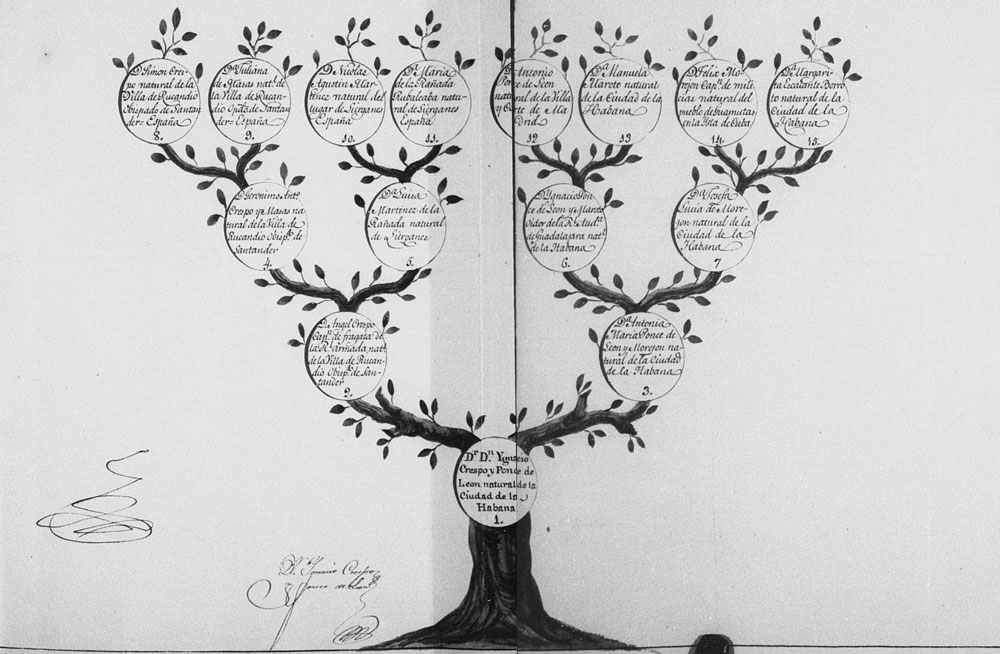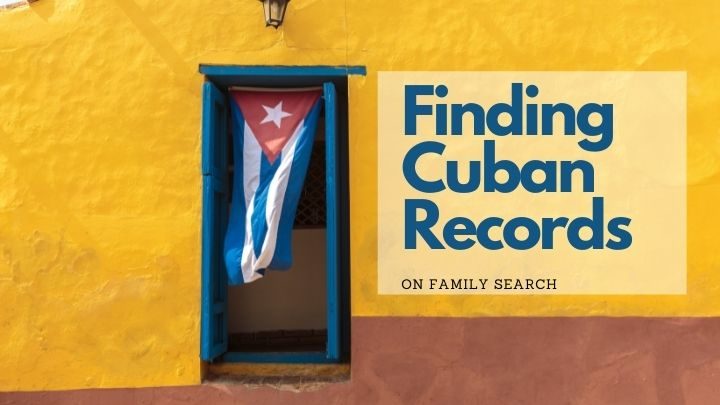In early 2020 FamilySearch released their Explore Historical Images tool, where digital images waiting to be indexed are stored. By the end of 2020, FamilySearch had over 4.3 billion record images and more than 1 million names indexed!1 What does that mean for Cuban researchers who lack abundant online records??
Cuban genealogists will tell you it means everything! Having additional research options where few are available is always a good thing. Let’s look at the types of records available as of July 2021 and how to find them.
FamilySearch Catalog
Eventually, the newly imaged records will end up in the FamilySearch Catalog. This is a good starting point to see what records are available, by category. The default search parameter is “Place” and searching by “Cuba” as a country, brings up a long list of records, sorted by category. If you’re not familiar with searching the catalog, view my past post on Using the FamilySearch Catalog.
Much of what is in the FamilySearch Catalog is great for historical context, such as understanding more about where your ancestor lived and what it was like for them. There are some digitized hidden gems that may help advance your research:
- Hojas de Servicios Militares de América : Cuba, 1765-1809
- These are Spanish military service sheets from 1765-1809. If your Cuban ancestor served in the Spanish military, these records are a MUST.
- A surname index to these records is located at the Family History Library and is not digitized. Catálogo XXII del Archivo de Simancas, Secretaría de Guerra (Siglo XVIII), Hojas de Servicios de América, FHL call number EUROPE 946 M23e.
- Actas de licensia para ausentarse en ultramar : 1845-1931
- This is a digitized record of residents from Betanzos, La Coruña, Spain who were granted licenses to emigrate to Cuba and Argentina. A searchable index is available.
- Registros del Consulado de España en La Habana, Cuba, Exenciones de quinta (1926-1927)
- These are files from the Spanish consulate of men residing in Cuba who have been called up for military service.
- Reseñas de pasaportes en los consulados en Argentina, Brazil, Bélgica, Cuba, Chile, Perú, Francia, Honduras, y México 1921-1939
- These records are digitized but only available at a FamilySearch affiliate library or history center. They contain passports issued at the Columbian Consulate in Cuba. Records start on image 2,416.
- RG 33 series — foreign registers and returns for British nationals in various countries, 1809-1853
- Cuba was the original melting pot of the world and if your ancestry includes those from Great Britain, this record set includes marriages, 1842-1849 and baptisms, 1847-1848.
- These records are digitized but only available at a FamilySearch affiliate library or history center. Records start on image 205.

FamilySearch Books
Many people do not realize the Family History Library is the largest genealogical library in the world. Many of the books in their catalog have been digitized and are available online. These books are listed as public or protected. Protected books must be viewed at the Family History Library. You can search by place, name, or keyword to find books that might be relevant to your family. Some may help further your research and some may give you ideas on where to research next. Search in Spanish and English to bring up more results.
There are some books within the collection online that pertain to family genealogies that are published and listed as protected that may be helpful to your research but don’t discount the books that are historical accounts of Cuba. Why? These books help enrich the perspective of our ancestors. For example, the Censo de la República de Cuba año de 1919 is not a listing of the people of Cuba, but the information that came from that census. It gives information about the geography, the flora and fauna, the natural resources, the industries, demographics, and the provinces. The book also compares the past censuses and the growth from previous census years. Use this type of book to help build the story of your ancestor.
The census books also list all of the employees and enumerators that worked for this census. It begins on page 857 / image 938. In the Municipio de Holguín, Oriente Province, Juan Diaz Tamayo was the enumerator for Haticos del Purial, and likely visited the homes of my husband’s grandparents for the 1919 Cuban census. Was Juan Diaz Tamayo a relative? Most likely!
FamilySearch Explore Historical Images
When using the historical images search, it’s very helpful if you are familiar with using the catalog and paging through images. Using this search can be extremely difficult. Don’t get discouraged!
For Cuba, the records are mixed in with other country records so you have to search through the different record sets that are listed. According to a general search on the place “Cuba,” there are 360 results (as of July 2021). However, not all of these results are for Cuba. The records are tagged Cuba but belong to the larger scanned image set of how they were originally microfilmed or digitized.
Records that don’t exist
According to my general search, Padrón, La Habana, Cuba has six entries for census records and drafts through the years of 1736-1900. (A padrón is a census, not a place. This just adds to the difficulty of using the historical images to search.)

When I click on the first entry with 50 images, I see Image Group Information in the right sidebar. (If it is collapsed, click on the little arrow that is on the right side of the screen.) This gives more detail about the images and what is included in the entire image set. For this example, La Habana, Cuba should contain draft records through the years 1736-1900 and is within the larger set of images that also include Venezuela, Spain, Mexico, and the Philippines.

All six selections make up a total of 896 images in the group. I looked at each image and did not find any records for La Habana, Cuba. I also did not see records for Centro, Tabasco, Mexico, and noted the records within Ferrol are not from the Philippines but from Spain. This is why using historical images can be frustrating. (Side note: I am attempting to find out how to fix the image groups that are wrongly tagged with places in Cuba.)
Don’t give up, because there are gems within these image sets!
Records that do exist
Although some record sets can leave you frustrated, there are usable record sets within the bunch. Some are newly added since May 2021! This means you should check back regularly to see if new record sets have been added.

Here are some record groups I have managed to find, broken out by direct links.
- Historia de Ciego de Avila “Remembranzas”
- Nobiliario Cubano por Las Grandes Familias Isleñas
- Real Consejo de las Ordenes Militares
- Migration records from Betanzos, La Coruña, Galicia, Spain to Argentina and Cuba
- Draft Records 1926-1927, Enlistment Records 1926-1927 (Includes photographs!)
- Historias de Familias Cubanas – El Conde de San Juan de Jaruco
- Francisco Xavier de Santa Cruz y Mallen – Research Papers – Set 1
- Francisco Xavier de Santa Cruz y Mallen – Research Papers – Set 2
- Cuba – 1963 Gazetteer
- El “Libro de Barajas” de La Catederal de la Habana (Index)
- Revista Indexes also available at CubaGenWeb and Cuban Genealogy Club
- A History of the West Indies, Containing the Natural, Civil, and Ecclesiastical History of Each Island Vol I – 1808
- A History of the West Indies, Containing the Natural, Civil, and Ecclesiastical History of Each Island Vol II – 1810
- A History of the West Indies, Containing the Natural, Civil, and Ecclesiastical History of Each Island Vol III – 1811
- Correspondence and registers between the island of Guadeloupe and Santiago de Cuba, 1803-1805: includes marriages and births of French nationals
- Correspondence and registers between the island of Guadeloupe and Santiago de Cuba, 1803-1809: includes marriages and births of French nationals
Good luck and happy hunting!
Bradshaw, Laurie. “2020 FamilySearch Year in Review.” FamilySearch Blog. FamilySearch, February 26, 2021. https://www.familysearch.org/blog/en/2020-year-in-review/. ↩
Angel C. Betancourt y Miranda, Censo de la República de Cuba año de 1919 (Habana, Cuba: Maza, Arroyo y Caso: 1919), 977; digital images, FamilySearch (https://www.familysearch.org/library/books/ : 3 Jul 2021). ↩
“Havana, Cuba Records,” images, FamilySearch (“Havana, Cuba Records,” images, FamilySearch (https://www.familysearch.org/ark:/61903/3:1:3Q9M-CSKB-H9CW-K : July 5, 2021), image 13 of 52; España. Real Consejo de las Ordenes Militares. ↩






Recent Comments